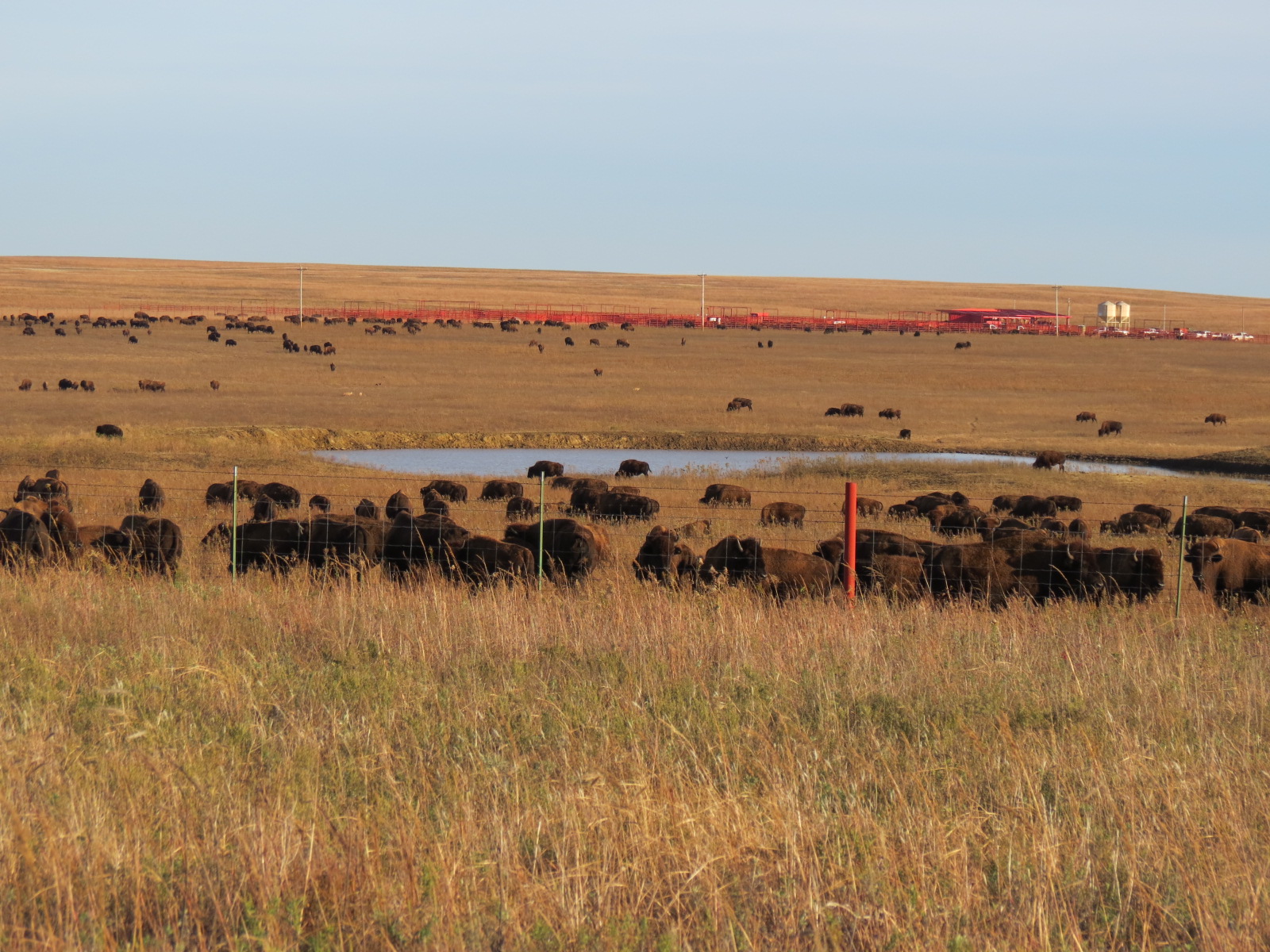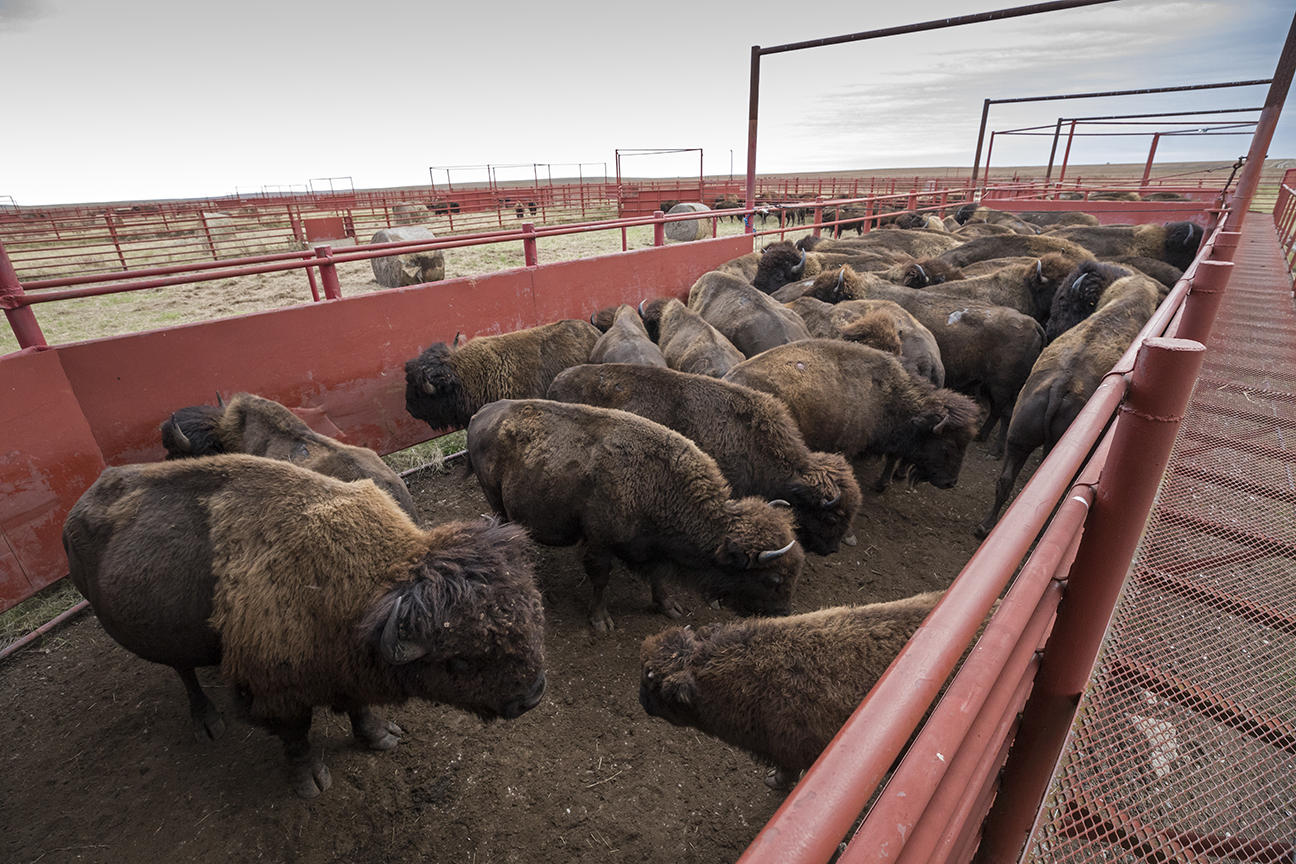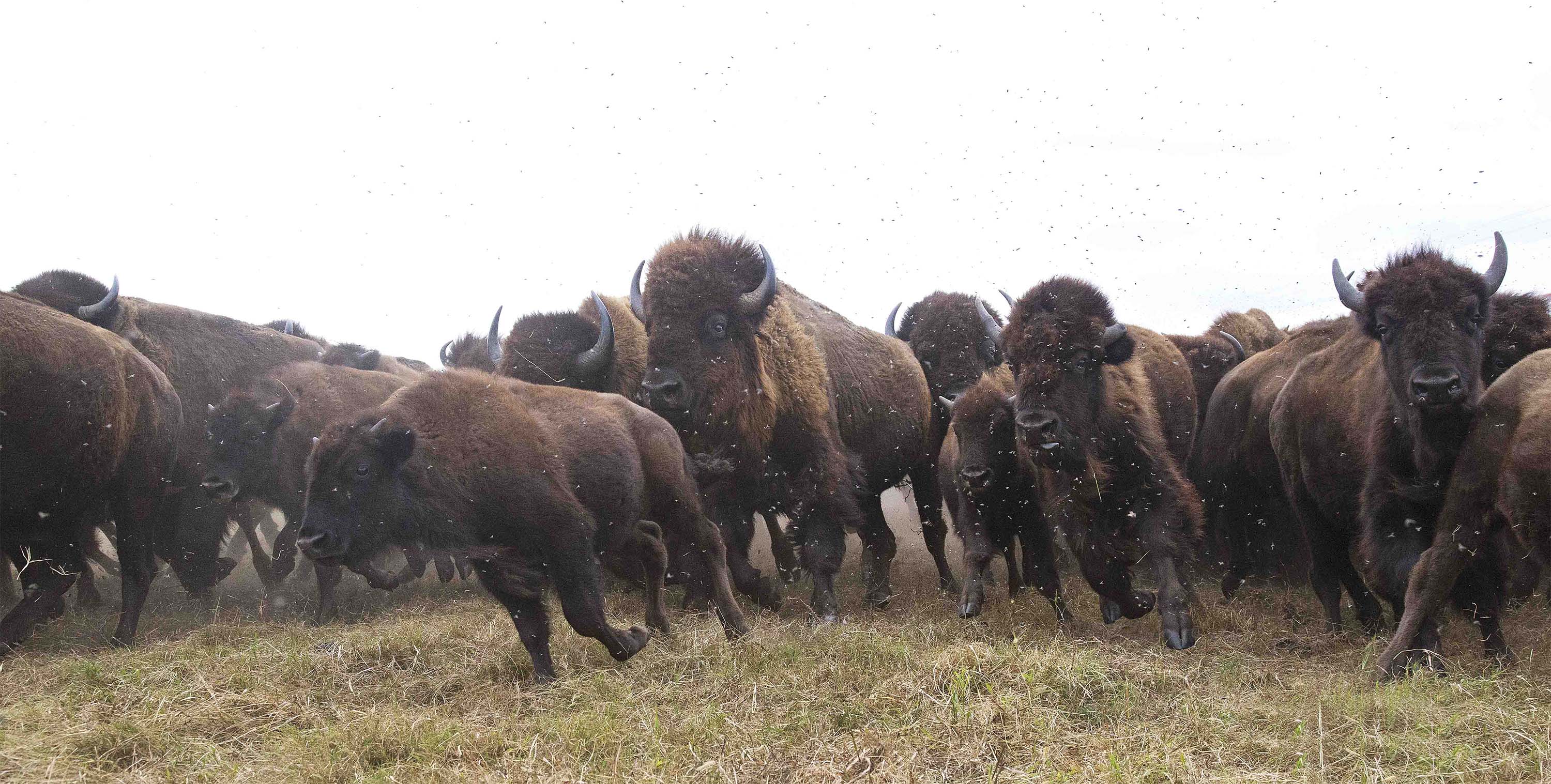Bison Roundup at Tallgrass Prairie Preserve
Each fall, Tallgrass Prairie bison are rounded up for their annual checkup.
Harvey Payne glances nervously over his shoulder at more than 2,500 bison which are about to be stampeded. For their own good.
The bison live on The Nature Conservancy’s Joseph H. Williams Tallgrass Prairie Preserve—the largest protected tallgrass prairie remnant left in the world. The Nature Conservancy reintroduced 300 bison (which eat almost entirely grass) here in 1993 to help restore the 39,000-acre preserve's balance between grasses and broadleaf plants.
Now, the entire herd is rounded up every fall by staff and local wranglers for a "check-up"—which includes a weigh-in and vaccinations.
“The wranglers go out and form a wall of pickups and get the bison moving,” Payne explains. “It’s like when the Indians used to drive them over cliffs. Once they get them heading this direction, they come.”
“The bison know what this round-up is all about,” says Payne, the community relations coordinator of the Tallgrass Prairie Preserve in Oklahoma. “They know what’s going to happen, and they don’t like it."

Round 'Em Up
Payne looks over his shoulder again on this cold, clear November morning, as a faint reverberation of bison hooves pounding the prairie behind him grows louder.
“Here they come,” Payne says as a herd of about 300 rumbles past him. Wranglers standing on the backs of flatbed pickup trucks are hollering and the drivers are revving their engines to discourage the bison from turning around and exiting a holding pen corral before the gates close.
Cattle cubes (or feed bait) are used to entice the bison—which roam freely on 23,000 acres at the preserve—into progressively smaller pastures, each time closing gates behind the animals.
“It's a difficult job,” Payne says. “Our guys had a lot of trouble getting the bison from the last 1,500-acre pasture into these smaller traps.”
Through the Working Chute
Once the bison are in the corral, the wranglers move about 50 to 75 of them at a time through a series of narrowing alleys and eventually into a “working chute,” where the check-up is conducted. Staff record data associated on unique transponders implanted in each bison’s ear; new calves are tagged during the round-up.
Because the herd has reached its target population of 2,500 animals, the preserve now sells close to as many bison as are born each spring—411 this year.
Most of the animals are purchased by meat producers, and this year, Payne says The Nature Conservancy will fetch between 70 cents and one dollar per pound per animal, with slight price differences for bulls and cows.
Return of Pure Bison—and the Prairie
By 1888, only 541 bison remained in the United States, many of which were saved by ranchers. Early on, ranchers attempted to cross-breed bison and cattle to create hearty cattle that could winter without being fed and that could better withstand the rigors of the weather.
During last year’s round-up, wranglers took hair samples from each bison as they passed through the working chute. The Nature Conservancy sent the samples to Texas A&M University to analyze the DNA and identify any cattle genes. By next year the preserve plans to sell those bison with cattle genes.
“What we’re striving for is as genetically pure of a herd as we can reasonably attain,” Payne says, adding that Texas A&M detected cattle DNA in about 5% of the bison at the preserve.
Today, bison are no longer in danger of extinction. The prairie that they depend on is on the rebound, too—in part because of the bison. Feeding primarily on grasses, rather than the forbs (broadleaf plants) that cattle often eat, bison are helping restore the plant diversity that once existed at the Tallgrass Prairie Preserve.
“Over the last 150 years, while the cattle have grazed here, you’ve seen a shift in plant communities away from a lot of forbs to—in some cases—not many forbs,” Payne says. “When you lose plant diversity, animal diversity typically follows.”

Bison Herd Doing Well After 2020 Roundup
During the annual fall roundup in 2020, 2,186 bison were worked through the corrals—only nine were uncatchable. Each year, there are always a few stubborn animals. These bison are "known escapees" by the preserve stewardship staff.
This year, 597 calves were born. The largest was a male weighing in at 480 lbs and the smallest was a female with only 145 lbs. The largest bison that came across the scales at the 2020 roundup was a 1,830-lb. bull born in 2012.
A total of 306 bison were sold this year in order to keep the size of the herd within the appropriate ecological stocking rate. Bulls are sold at 6-7 years of age, since after this, they tend to become more aggressive and dangerous. Cows are sold at 10-12 years of age.
2024 Update
The results are in! Here's what the Tallgrass Prairie Preserve bison herd looked like at our most recent roundup in the fall of 2024.
2,104 total bison counted
587 calves born in 2024
489 pounds – heaviest calf counted
1,892 pounds – heaviest adult counted
Support Prairie Conservation in Oklahoma
Show your Okie pride by sporting a speciality bison license plate on your car or make a donation to further continue conservation efforts across the prairie.




